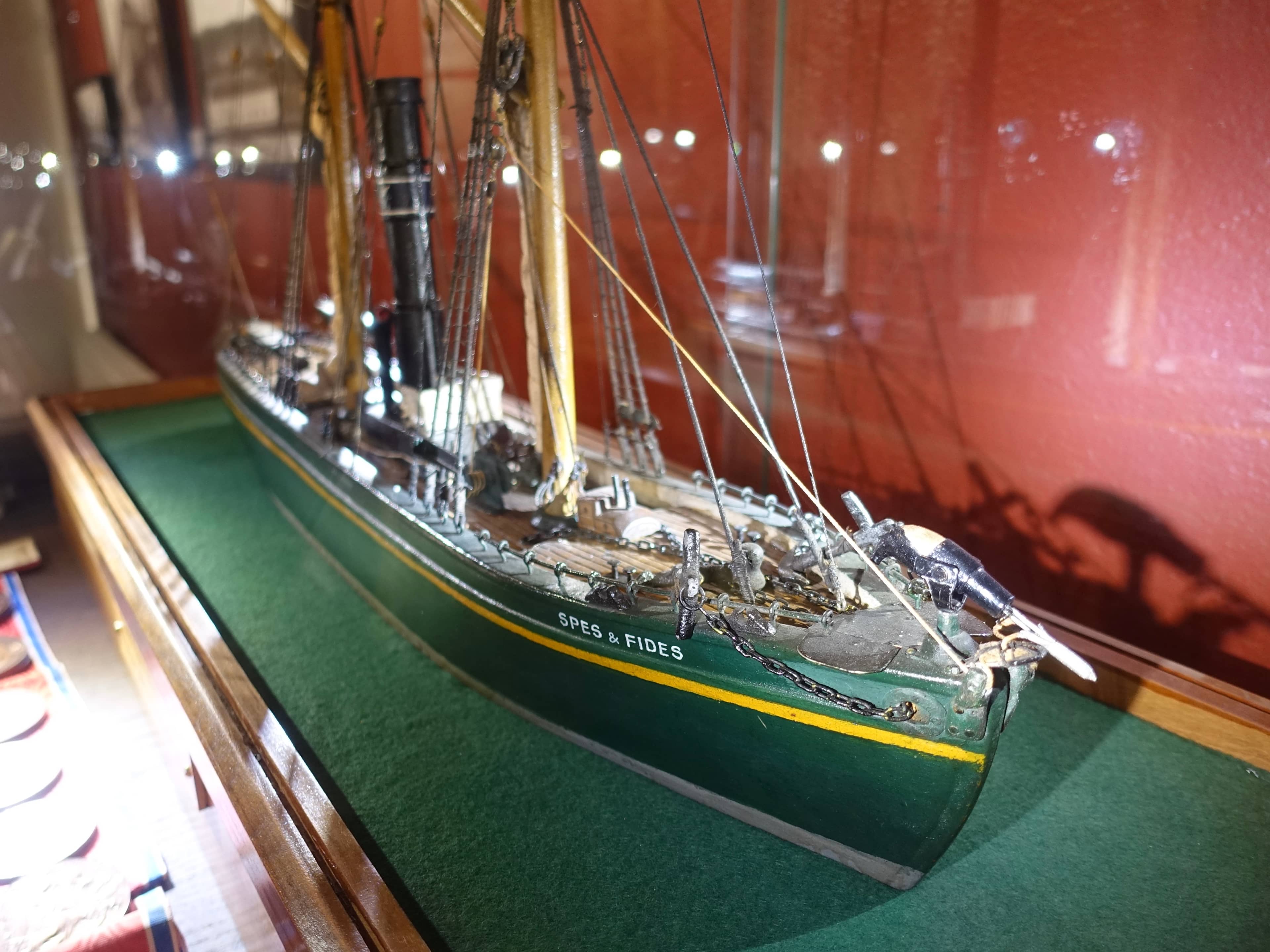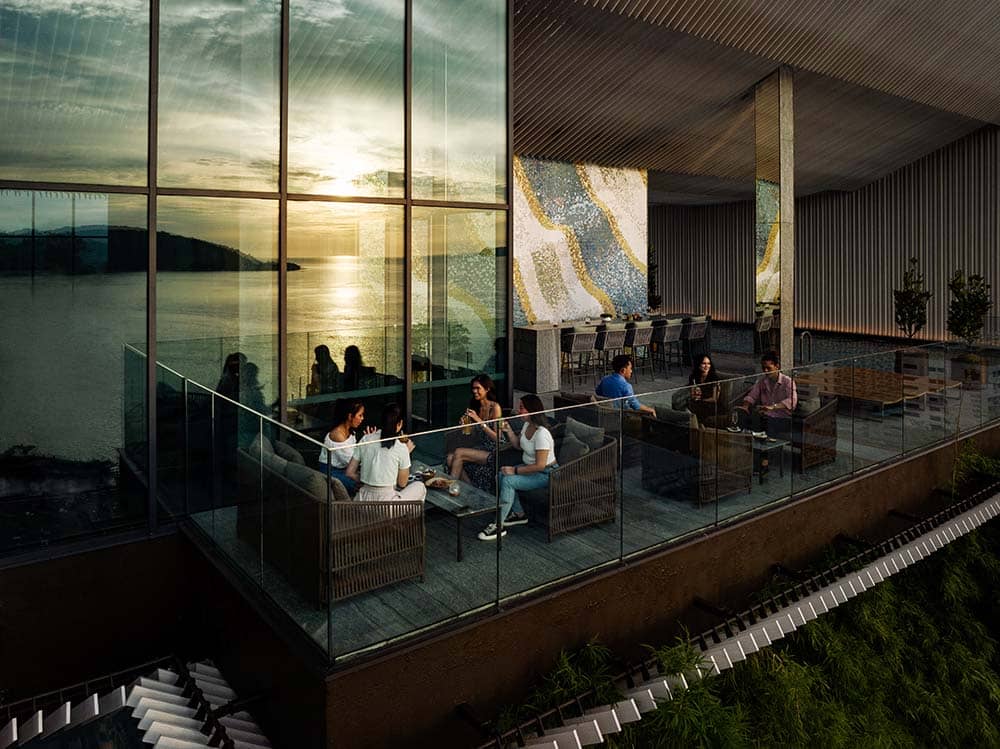
Norwegian Maritime Museum
Explore Norway's rich maritime heritage, from Viking ships to modern vessels, with stunning fjord views.

Highlights
Must-see attractions

Social
From TikTok & Reddit
Best Time
Fewer crowds, more peaceful exploration

Norwegian Maritime Museum
Best Time
Fewer crowds, more peaceful exploration

Highlights
Must-see attractions
Explore Norway's rich maritime heritage, from Viking ships to modern vessels, with stunning fjord views.
"A fascinating look at Norway's deep connection to the sea, with impressive boat collections."

🚢 Ferry for Scenic Arrival
Take the ferry from Rådhusplassen for beautiful fjord views on your way to the museum.
⏳ Allow Ample Time
The museum is quite large; dedicate at least 2-3 hours to fully appreciate the exhibits.

Highlights
Discover the most iconic attractions and experiences

Historic Boat Collection
Main Exhibition Halls
Explore a diverse range of traditional wooden vessels, fishing boats, and even Viking ship replicas.

Model Ship Gallery
Dedicated Gallery
Marvel at meticulously crafted models, from ancient ships to modern cruise liners.

Fjord View Terrace
Cafe Terrace
Enjoy a coffee or snack with stunning panoramic views of the Oslofjord.
Plans like a pro.
Thinks like you
Planning Your Visit
Timing Your Visit
Getting to Bygdøy Peninsula
Best Times
Insider Tips
from TikTok, Instagram & Reddit
One Afternoon in Oslo
🚢 Ferry for Scenic Arrival
Take the ferry from Rådhusplassen for beautiful fjord views on your way to the museum.
⏳ Allow Ample Time
The museum is quite large; dedicate at least 2-3 hours to fully appreciate the exhibits.
Museum recommendations Oslo
Going to be staying in Oslo for a couple of days
🧒 Kid-Friendly Section
There's a dedicated children's area that's engaging for younger visitors.
☕ Cafe with a View
Enjoy refreshments on the terrace for lovely Oslofjord vistas.
Tips
from all over the internet
🚢 Ferry for Scenic Arrival
Take the ferry from Rådhusplassen for beautiful fjord views on your way to the museum.
⏳ Allow Ample Time
The museum is quite large; dedicate at least 2-3 hours to fully appreciate the exhibits.
🧒 Kid-Friendly Section
There's a dedicated children's area that's engaging for younger visitors.
☕ Cafe with a View
Enjoy refreshments on the terrace for lovely Oslofjord vistas.
What Travellers Say
Reviews Summary
Visitors generally find the Norwegian Maritime Museum to be a well-presented institution with a comprehensive look at Norway's seafaring history, particularly appreciating the historic boat collection and model ships. However, some feel the exhibits could be more interactive, and the museum might be smaller than anticipated for those expecting a full-day experience.
"Enjoyed the overall experience, but I wish the exhibits were more hand on and interactive than just looking at some model boats. For example, there was an interactive informative game in a section which had multiple people waiting to play, if they had more, then it would be more fun. Also, the museum is very big, and since we had a limited amount of time, it was even more disappointing we didn’t have any fun. Overall sort of underwhelming experience, but if you are looking for a museum to spend your whole day at, then this is it,"
Eason Cai
"We really enjoyed our visit and as the name suggests it covers a great deal of the history of Norwegian Maritime explorations and constructions. We were lucky enough to be there as carpenters were working on a boat. The original biking boat is extraordinarily interesting. If this is combined with the other museums in the area, it makes for almost a full day of exploration."
Ross Daniels
"The Norwegian Maritime Museum (Norsk Maritimt Museum) in Oslo is a fascinating institution dedicated to preserving and showcasing Norway's rich maritime heritage. Located on the Bygdøy Peninsula, the museum offers a comprehensive look at Norway's deep connection to the sea, which has been central to its culture, economy, and history.
The museum houses a collection of historic boats and ships, including traditional wooden vessels, fishing boats, and even replicas of Viking ships. These exhibits provide insight into the evolution of shipbuilding and maritime technology in Norway.
A highlight of the museum is its extensive collection of model ships, which range from ancient vessels to modern cruise ships. These models are meticulously crafted and provide a detailed look at the design and function of different types of ships.
The Norwegian Maritime Museum is a must-visit for anyone interested in maritime history, naval architecture, or the cultural significance of the sea in Norwegian life. It provides a comprehensive and engaging experience that appeals to both casual visitors and maritime enthusiasts."
Aleksandar Miljic
What People Like
What People Dislike
Frequently Asked Questions
🚇 🗺️ Getting There
You can reach the museum by bus (lines 30 to Bygdøy) or, during the summer months, by taking a scenic ferry from Rådhusplassen (City Hall Pier) to Bygdøy. The ferry offers a beautiful journey across the Oslofjord.
Limited parking is available on the Bygdøy Peninsula, but it can fill up quickly, especially during peak season. Public transport or the ferry is often a more reliable option.
Yes, the Norwegian Maritime Museum is within walking distance of other museums on the Bygdøy Peninsula, such as the Viking Ship Museum (though currently closed for renovation) and the Fram Museum.
Walking is a pleasant option between the Bygdøy museums. Alternatively, the local bus line 30 connects them, and during summer, there's a hop-on-hop-off boat service.
Absolutely! Bus line 30 stops near the museum, making it easily accessible via Oslo's public transport network.
🎫 🎫 Tickets & Entry
Opening hours can vary seasonally. It's best to check the official Norwegian Maritime Museum website for the most up-to-date information before your visit.
Admission fees apply. Check the museum's official website for current ticket prices and any potential discounts for students, seniors, or families.
Yes, purchasing tickets online in advance is often recommended, especially during busy periods, to save time and guarantee entry.
While not always available, it's worth checking if any joint ticket options exist for multiple museums on the Bygdøy Peninsula, which could offer savings.
Yes, the museum has a dedicated children's section designed to be interactive and engaging for younger visitors.
🎫 🧭 Onsite Experience
The museum features a comprehensive collection of historic boats, detailed model ships, exhibits on Norwegian maritime history, and a special section for children.
Most visitors spend around 2-3 hours exploring the museum's exhibits. However, you could easily spend longer if you're deeply interested in maritime history.
While some exhibits are more traditional displays, there are interactive elements, including an informative game mentioned by visitors. More hands-on activities would enhance the experience for some.
Yes, the museum has a top-quality gift shop offering a range of maritime-themed souvenirs, books, and gifts.
The museum building itself is noted for its special architecture, adding to the overall visitor experience.
🍽️ 🍽️ Food & Dining
Yes, there is a cafe located within the museum that offers snacks and drinks.
The cafe serves not-very-complex snacks and drinks. It's a good spot for a casual break during your visit.
Indeed, the cafe features an outdoor terrace that provides a very beautiful view of the Oslofjord, making it a pleasant place to relax.
The Bygdøy Peninsula has other cafes and restaurants, particularly near other museums. For a wider selection, you might need to return to the city center.
Generally, outside food and drinks are not permitted inside the museum galleries. It's best to consume your own food in designated areas or before/after your visit.
📸 📸 Photography
Photography for personal use is typically allowed inside the museum, but flash photography may be restricted in certain areas to protect exhibits. Always check for signage.
The outdoor terrace offers fantastic panoramic shots of the Oslofjord. Inside, the detailed model ships and historic boats provide excellent photographic opportunities.
If replicas are on display, photography is usually permitted, but be mindful of other visitors and any specific museum rules.
Drone usage is generally restricted in urban areas and near cultural institutions. It's advisable to check local regulations before flying a drone in the vicinity.
A camera with good low-light capabilities is beneficial for indoor shots. A versatile lens will help capture both wide shots of the boats and details of the models.
For Different Travelers
Tailored advice for your travel style
👨👩👧 Families with Kids
Consider visiting during off-peak hours to give children more space to explore. The museum's cafe also offers a convenient spot for a break, and the outdoor terrace provides a pleasant view. Combining the visit with a ferry ride to Bygdøy can also add to the adventure for kids.
🏛️ History Enthusiasts
Allow ample time to explore the various galleries, as the museum offers a comprehensive overview of Norway's relationship with the sea. The Bygdøy Peninsula location also allows for a broader historical context by visiting other related museums in the vicinity.
🚶 Day-Trippers from Oslo
Plan for about 2-3 hours to explore the main exhibits. You can easily combine this with a visit to other museums on the Bygdøy Peninsula or enjoy a walk along the coast. The museum's cafe is a good spot for a quick refreshment before heading back to the city.
Deep Dives
In-depth insights and expert knowledge
Norway's Maritime Heritage
The museum's exhibits cover a vast timeline, detailing the evolution of shipbuilding, navigation, and fishing techniques. Visitors can learn about the daring voyages of exploration, the challenges of Arctic exploration, and the crucial role of merchant fleets. The Bygdøy Peninsula, where the museum is located, is itself a hub for maritime history, housing several related institutions, making it a perfect setting for this institution.
Beyond historical artifacts, the museum also touches upon the cultural impact of the sea on Norwegian life, including art, literature, and traditions. It provides a comprehensive and engaging experience for anyone interested in understanding how the sea has shaped Norway into the nation it is today.
Exploring the Collections
Another significant draw is the extensive model ship gallery. These meticulously crafted models provide detailed insights into the design, construction, and function of various types of ships throughout history, from early galleys to grand sailing ships and modern vessels. They serve as invaluable educational tools, illustrating the progression of maritime technology.
While some visitors have noted a desire for more hands-on exhibits, the museum does offer interactive elements, such as an informative game. The presence of carpenters working on a boat during one visitor's experience highlights the museum's commitment to showcasing living maritime traditions.
The Bygdøy Peninsula Experience
Many visitors choose to combine their visit to the Maritime Museum with other attractions on Bygdøy. While the famous Viking Ship Museum is currently closed for renovation, other notable museums like the Fram Museum (dedicated to polar exploration) and the Kon-Tiki Museum are nearby. The scenic ferry ride to Bygdøy itself is often highlighted as a pleasant part of the overall experience, offering lovely views of the Oslofjord.
Beyond the museums, Bygdøy also offers beautiful parks and coastal walks, providing opportunities to enjoy the natural landscape. This makes the peninsula a well-rounded destination for history buffs, families, and anyone looking to experience a blend of culture and nature in Oslo.





Social
from TikTok, Instagram & Reddit